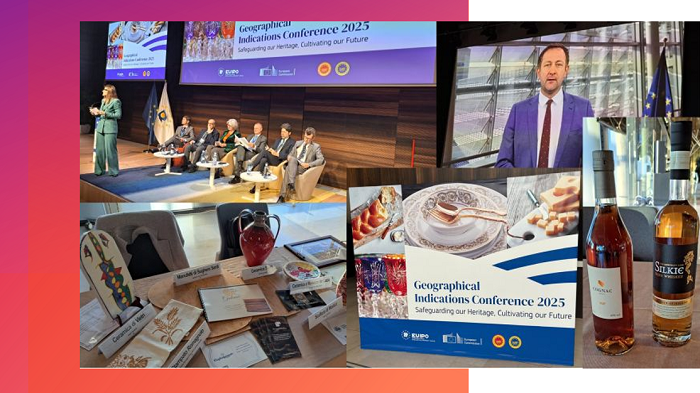
Last week, I had the pleasure of speaking at the 2025 Geographical Indications Conference in Alicante. With over 2,000 participants, the event – organized by the European Union Intellectual Property Office EUIPO and the European Commission was a great success.
Apart from celebrating the 30-year-long success of EU agri-food GIs, the event also served to discuss the recent extension of the concept to craft and industrial GIs and the joint efforts by GI producer groups to advance their sustainability efforts.
GIs are so much more than a (food) label – they are a badge of honour that stands for a particular culinary tradition and a way of life. A GI tells a story about a specific product and the people that make it. In a world often marked by globalized mass production GI products stand out thanks to their unique quality and authenticity.
Europe is best in class when it comes to producing quality food and drink – and GIs are one of the backbones of this remarkable success.
With the growing success of GIs comes growing responsibility. Spirits GIs tend to score high in terms of their inherent sustainability performance, as their production requires a long-term mindset: quite simply, producing a particular agriculturally-derived product in a particular region for up to 200-300 years – as is the case for many spirits GIs – is only possible if you conduct operations in a truly sustainable manner.
Speakers acknowledged the important role that GIs play in ensuring social and economic sustainability for the – mostly – rural areas and communities that produce them. So what about environmental sustainability? Here, the new GI Regulation encourages producer groups to intensify their efforts, share best practices and report about these efforts as part of their ongoing activities.
In GI spirits, we’re seeing a lot of ambitious action happening. Whether it’s the environmental certification scheme that is being rolled out by the BNIC with winegrowers in the Cognac GI or the sustainability Roadmap that is being implemented by the Irish Whiskey Association (IWA), GI producer groups are starting to build robust multiannual strategies. These strategies address environmental sustainability from different angles.
They start with the sourcing and certification of sustainable agricultural raw materials. They continue with the sustainable use of water, energy, and by-products during distillation. Finally, they focus on the last steps, such as working on sustainable packaging, labelling, and modes of transport.
One of the particular strengths that was highlighted about the new GI Regulation is that it encourages the scaling up of environmental sustainability efforts in a flexible, bottom-up way that allows for peer-to-peer learning within the producer groups and enables trustful cooperation between companies of all sizes. Successful GIs are the result of longstanding teamwork within the producer groups, and this applies to environmental sustainability efforts, too. One thing is clear: only by choosing rigorously sustainable production methods today can we be sure that future generations can also enjoy a 30-year-old GI spirit from Europe in years, decades or centuries to come!
Ulrich Adam*
* In his capacity as permanent representative of SPRL ADLOR Consulting
